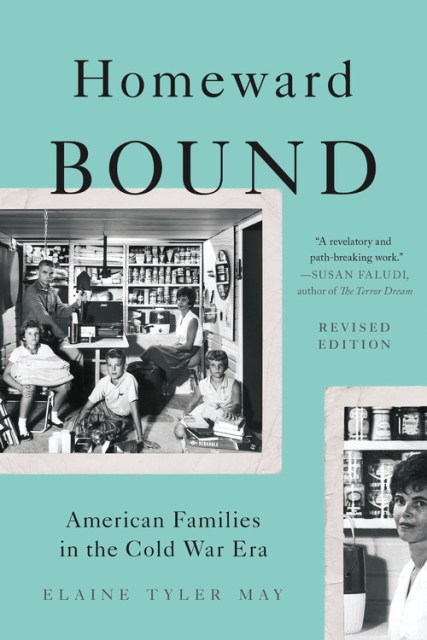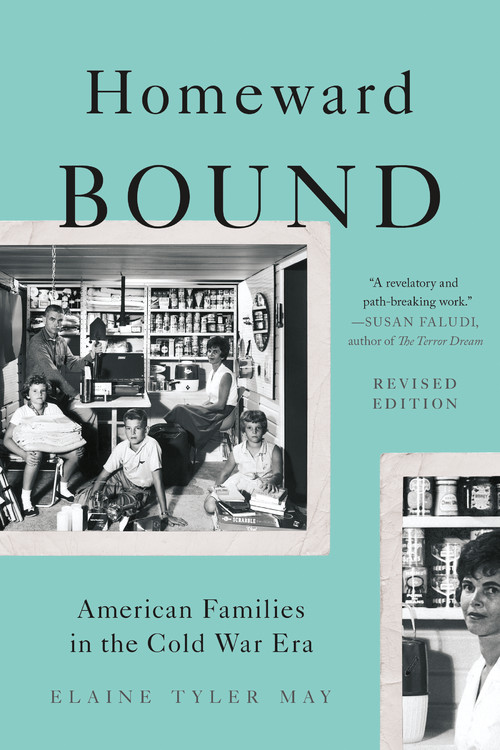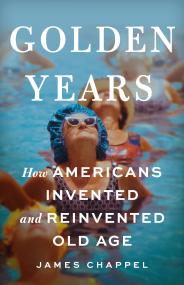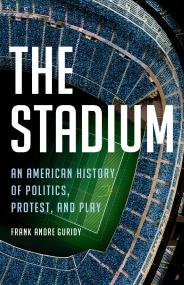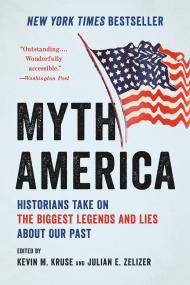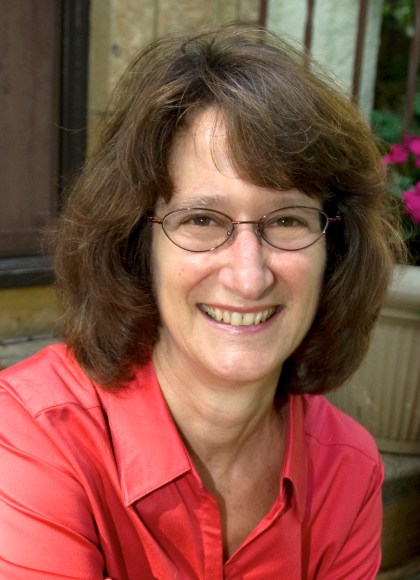Promotion
Use code BEST25 for 25% off storewide. Make sure to order by 11:59am, 12/12 for holiday delivery!
By clicking “Accept,” you agree to the use of cookies and similar technologies on your device as set forth in our Cookie Policy and our Privacy Policy. Please note that certain cookies are essential for this website to function properly and do not require user consent to be deployed.
Homeward Bound
American Families in the Cold War Era
Contributors
Formats and Prices
- On Sale
- Dec 19, 2017
- Page Count
- 320 pages
- Publisher
- Basic Books
- ISBN-13
- 9780465064649
Price
$17.99Price
$22.99 CADFormat
Format:
- Trade Paperback (Revised) $17.99 $22.99 CAD
- ebook $12.99 $16.99 CAD
- Audiobook Download (Unabridged)
This item is a preorder. Your payment method will be charged immediately, and the product is expected to ship on or around December 19, 2017. This date is subject to change due to shipping delays beyond our control.
Buy from Other Retailers:
-
"A major addition to the literature on the history of the family [that] significantly enhances our understanding of American society in the 1950s."
-New York Times
"As Elaine Tyler May...has explained, marriage was not necessarily a positive expression of love or family values in the '50s; it was also an expedient means of 'containing' sex among the young."
-Frank Rich, New Republic
"Skillfully piecing together a social history of sex roles and mores governing data, parenting, birth control, consumerism, and divorce from the Depression to the late '60s, May supports her thesis with a wide range of unusual evidence, from Hollywood scripts and movie magazines to opinion surveys, economic studies, and federal employment and civil defense policies."
-Constance Perin, Los Angeles Times Book Review -
"May sets a new standard for social history by linking intimate family life of the 1950s with the larger imperatives of the Cold War. Homeward Bound should lay to rest forever the notion that the '50s represent some sort of benchmark for 'traditional values'...a fascinating look at this unique, even aberrant, decade."
-Barbara Ehrenreich, author of Dancing in the Streets
"Elaine Tyler May's Homeward Bound is a revelatory and path-breaking work, a brilliant excavation of the gender bedrock beneath the surreal landscape of Cold War American life. By connecting the bomb and the bedroom, the fallout shelter and the nuclear family, May links the personal with the political on profound new levels."
-Susan Faludi, author of The Terror Dream
"A provocative, always entertaining description of the interconnections between the Cold War anticommunism of post-World War II America and the domestic ideology that Betty Friedan unmasked..."
-Signs -
"A provocative thesis that will stir debate."
-Library Journal
"This book helps the Baby Boom generation understand its genesis."
-Booklist
-
"May offers a sensitive, nuanced reading of domestic ideology, judging but never blaming. Her men are not oppressors, her women not betrayers....History has a long-and often dark-shadow in this book."
-Beth Bailey, author of Sex in the Heartland
"Particularly refreshing is May's superb use of images taken from Civil Defense publications....May's scholarship is superb."
-Joseph M. Hawes, Journal of American History
"May is fundamentally correct...that something was cooking under the surface of those placid 1950s families with their station wagons and their bomb shelters."
-Eric Black, Minneapolis Star Tribune -
"Homeward Bound comes as a timely antidote to any nostalgia for the 'affluent' '50s or a revival of its domestic ideology."
-Rochelle Gatlin, San Francisco Review of Books
"This fascinating book shows us that the Cold War took place in kitchens, bedrooms and family rooms, as well as in the Pentagon. This is not just for historians-it's a good read for everyone."
-Linda Gordon, New York University
-
"Required reading for anyone who wants to understand how the upheavals in family life of recent years could have happened so quickly after the baby-boom era of togetherness and stability."
-Arlene Skolnick, University of California, Berkeley
"A provocative, challenging, persuasive interpretation of the internal dynamics that shaped America family life in the postwar years."
-William Chafe, author of Never Stop Running
Newsletter Signup
By clicking ‘Sign Up,’ I acknowledge that I have read and agree to Hachette Book Group’s Privacy Policy and Terms of Use
